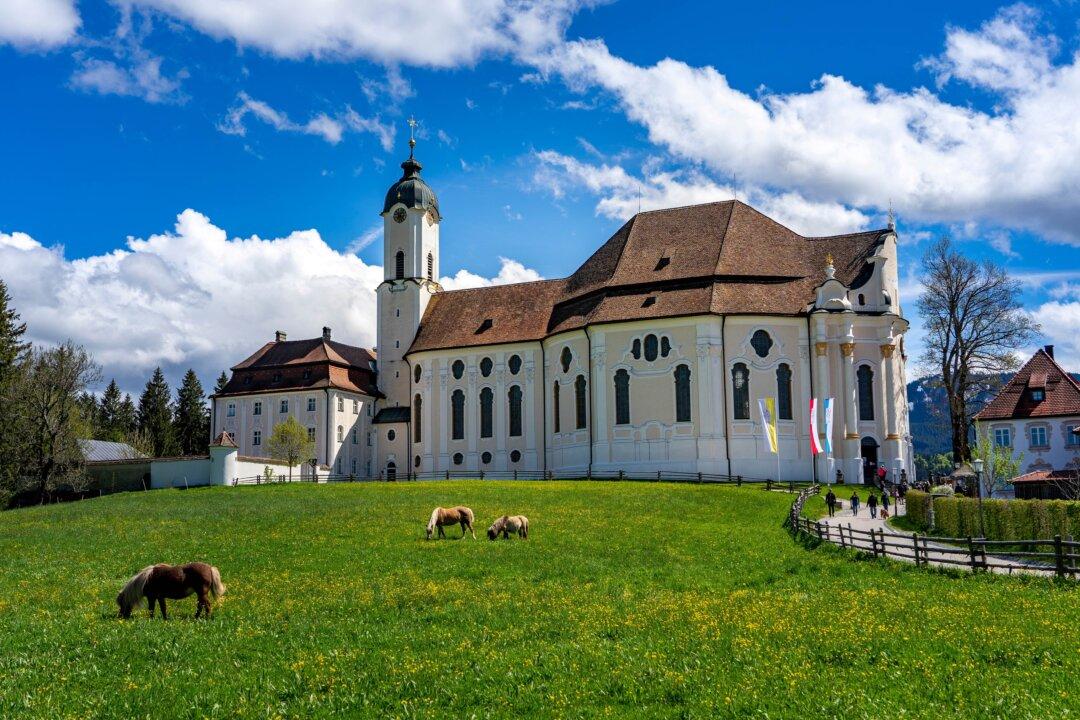A pilgrimage site since the 18th century, the Bavarian Church of Wies (“Wieskirche” in German) in southern Germany near the foothills of the Alps is a masterpiece of Rococo architecture, a style that emerged during the late Baroque. The church was designed and decorated by brothers Dominikus and Johann Baptist Zimmerman.
The Church of Wies came about after a miraculous sighting in 1738. It is said that a local farmer’s wife saw tears in the eyes of a wooden figure of Christ. With an influx of visitors, the abbot of Steingaden commissioned Dominikus Zimmermann to design a splendid sanctuary for the “Scourged Savior.”






